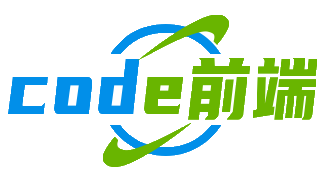深入探索Vuetify表单组件,构建高效用户界面的利器
在现代Web应用开发中,表单是用户与应用进行交互的重要途径,无论是注册登录、数据提交还是搜索筛选,表单的设计与实现直接影响着用户体验,Vuetify作为一个流行的Vue.js UI框架,提供了丰富且易用的表单组件,帮助开发者快速构建美观、功能强大的表单,本文将深入探讨Vuetify表单组件的各个方面,从基础使用到高级定制,为开发者提供全面的指南。
Vuetify表单组件基础
文本输入框(v - text - field)
v - text - field是Vuetify中最基本的文本输入组件,它支持多种类型,如文本、密码、电子邮件等,通过简单的配置,就可以设置输入框的标签、占位符、错误提示等。
<template>
<v - text - field
label="用户名"
placeholder="请输入用户名"
:rules="[v => v.length >= 3 || '用户名至少3个字符']"
></v - text - field>
</template>
在上述代码中,label属性设置输入框的标签,placeholder属性设置占位符,rules属性用于定义输入校验规则,当用户输入不符合规则时,会显示相应的错误提示。
选择框(v - select)
v - select组件用于创建下拉选择框或多选框,可以通过items属性传入选项数据,v - model绑定选中的值。
<template>
<v - select
:items="['选项1', '选项2', '选项3']"
v - model="selectedOption"
label="请选择"
></v - select>
</template>
<script>
export default {
data() {
return {
selectedOption: null
};
}
};
</script>
如果需要创建多选框,只需设置multiple属性为true,并且v - model绑定一个数组来存储选中的多个值。
复选框(v - checkbox)
v - checkbox组件用于创建复选框,可以单个使用,也可以成组使用。
<template>
<v - checkbox
label="我同意条款"
v - model="isAgreed"
></v - checkbox>
</template>
<script>
export default {
data() {
return {
isAgreed: false
};
}
};
</script>
成组使用时,可以通过v - model绑定一个数组,每个复选框通过value属性设置其对应的值。
<template>
<div>
<v - checkbox
v - for="(item, index) in checkboxItems"
:key="index"
:label="item.label"
:value="item.value"
v - model="selectedCheckboxValues"
></v - checkbox>
</div>
</template>
<script>
export default {
data() {
return {
checkboxItems: [
{ label: '选项A', value: 'a' },
{ label: '选项B', value: 'b' },
{ label: '选项C', value: 'c' }
],
selectedCheckboxValues: []
};
}
};
</script>
表单验证
内置验证规则
Vuetify提供了一系列内置的验证规则,如required(必填)、minLength(最小长度)、maxLength(最大长度)等,这些规则可以直接在表单组件的rules属性中使用。
<template>
<v - text - field
label="密码"
:rules="[
v => v.length >= 6 || '密码至少6位',
v => /[A - Za - z]/.test(v) || '密码必须包含字母',
v => /[0 - 9]/.test(v) || '密码必须包含数字'
]"
></v - text - field>
</template>
自定义验证规则
除了内置规则,开发者还可以根据需求自定义验证规则,自定义规则是一个函数,接受输入值作为参数,返回true或false,或者返回错误信息字符串。
<template>
<v - text - field
label="自定义验证"
:rules="[customRule]"
></v - text - field>
</template>
<script>
export default {
methods: {
customRule(value) {
if (value === '特定值') {
return true;
}
return '输入必须是特定值';
}
}
};
</script>
表单布局
使用网格系统布局
Vuetify的网格系统可以方便地对表单组件进行布局,通过v - row和v - col组件,可以实现响应式的表单布局。
<template>
<v - row>
<v - col cols="6">
<v - text - field
label="姓名"
></v - text - field>
</v - col>
<v - col cols="6">
<v - text - field
label="邮箱"
></v - text - field>
</v - col>
</v - row>
</template>
上述代码将两个文本输入框分别放置在两个宽度为6列的列中,实现水平排列。
表单组(v - form - group)
v - form - group组件可以将相关的表单元素组合在一起,提供更好的视觉组织。
<template>
<v - form - group
label="个人信息"
prepend-icon="person"
>
<v - text - field
label="姓名"
></v - text - field>
<v - text - field
label="年龄"
></v - text - field>
</v - form - group>
</template>
在这个例子中,v - form - group组件有一个标签和一个前置图标,内部包含两个文本输入框,使表单结构更加清晰。
高级定制
自定义样式
Vuetify允许通过覆盖默认的CSS类或使用style和class属性来自定义表单组件的样式,可以通过覆盖v - text - field__input类来改变文本输入框的字体颜色。
.v - text - field__input {
color: #ff0000;
}
也可以在组件上直接使用style属性。
<template>
<v - text - field
label="自定义样式"
style="width: 200px; color: #00ff00;"
></v - text - field>
</template>
事件处理
表单组件提供了丰富的事件,如input、change、blur等,开发者可以通过这些事件来实现自定义的逻辑。
<template>
<v - text - field
label="实时监听"
@input="handleInput"
></v - text - field>
</template>
<script>
export default {
methods: {
handleInput(value) {
console.log('输入值改变:', value);
}
}
};
</script>
与后端交互
提交表单数据
当用户填写完表单后,需要将数据提交到后端服务器,可以通过在表单组件上绑定submit事件,并在事件处理函数中使用fetch或其他HTTP库来发送数据。
<template>
<form @submit.prevent="submitForm">
<v - text - field
label="用户名"
v - model="user.username"
></v - text - field>
<v - text - field
label="密码"
v - model="user.password"
type="password"
></v - text - field>
<v - btn type="submit">提交</v - btn>
</form>
</template>
<script>
export default {
data() {
return {
user: {
username: '',
password: ''
}
};
},
methods: {
async submitForm() {
try {
const response = await fetch('/api/login', {
method: 'POST',
headers: {
'Content - Type': 'application/json'
},
body: JSON.stringify(this.user)
});
const result = await response.json();
console.log('登录结果:', result);
} catch (error) {
console.error('提交表单错误:', error);
}
}
}
};
</script>
处理后端返回的错误
后端可能会返回一些错误信息,如用户名已存在、密码错误等,开发者需要在前端将这些错误信息展示给用户,可以在fetch的catch块中处理错误,并更新表单的错误提示。
<template>
<form @submit.prevent="submitForm">
<v - text - field
label="用户名"
v - model="user.username"
:error="usernameError"
:rules="[v =>!usernameError || usernameError]"
></v - text - field>
<v - text - field
label="密码"
v - model="user.password"
type="password"
:error="passwordError"
:rules="[v =>!passwordError || passwordError]"
></v - text - field>
<v - btn type="submit">提交</v - btn>
</form>
</template>
<script>
export default {
data() {
return {
user: {
username: '',
password: ''
},
usernameError: '',
passwordError: ''
};
},
methods: {
async submitForm() {
try {
const response = await fetch('/api/login', {
method: 'POST',
headers: {
'Content - Type': 'application/json'
},
body: JSON.stringify(this.user)
});
const result = await response.json();
console.log('登录结果:', result);
} catch (error) {
if (error.response) {
const { data } = error.response;
if (data.usernameError) {
this.usernameError = data.usernameError;
}
if (data.passwordError) {
this.passwordError = data.passwordError;
}
} else {
console.error('提交表单错误:', error);
}
}
}
}
};
</script>
Vuetify的表单组件为开发者提供了一个强大的工具集,无论是简单的表单还是复杂的交互表单,都能轻松应对,通过基础使用、表单验证、布局设计、高级定制以及与后端的交互,开发者可以构建出高效、美观且用户友好的表单界面,掌握Vuetify表单组件的使用,对于提升Web应用的开发效率和用户体验具有重要意义,随着项目需求的不断变化和发展,开发者还可以进一步探索Vuetify的其他功能,以满足更多复杂的业务场景,希望本文能够帮助读者深入理解和运用Vuetify表单组件,在Web开发的道路上迈出更坚实的步伐。
版权声明
本文仅代表作者观点,不代表Code前端网立场。
本文系作者Code前端网发表,如需转载,请注明页面地址。
 code前端网
code前端网


发表评论:
◎欢迎参与讨论,请在这里发表您的看法、交流您的观点。